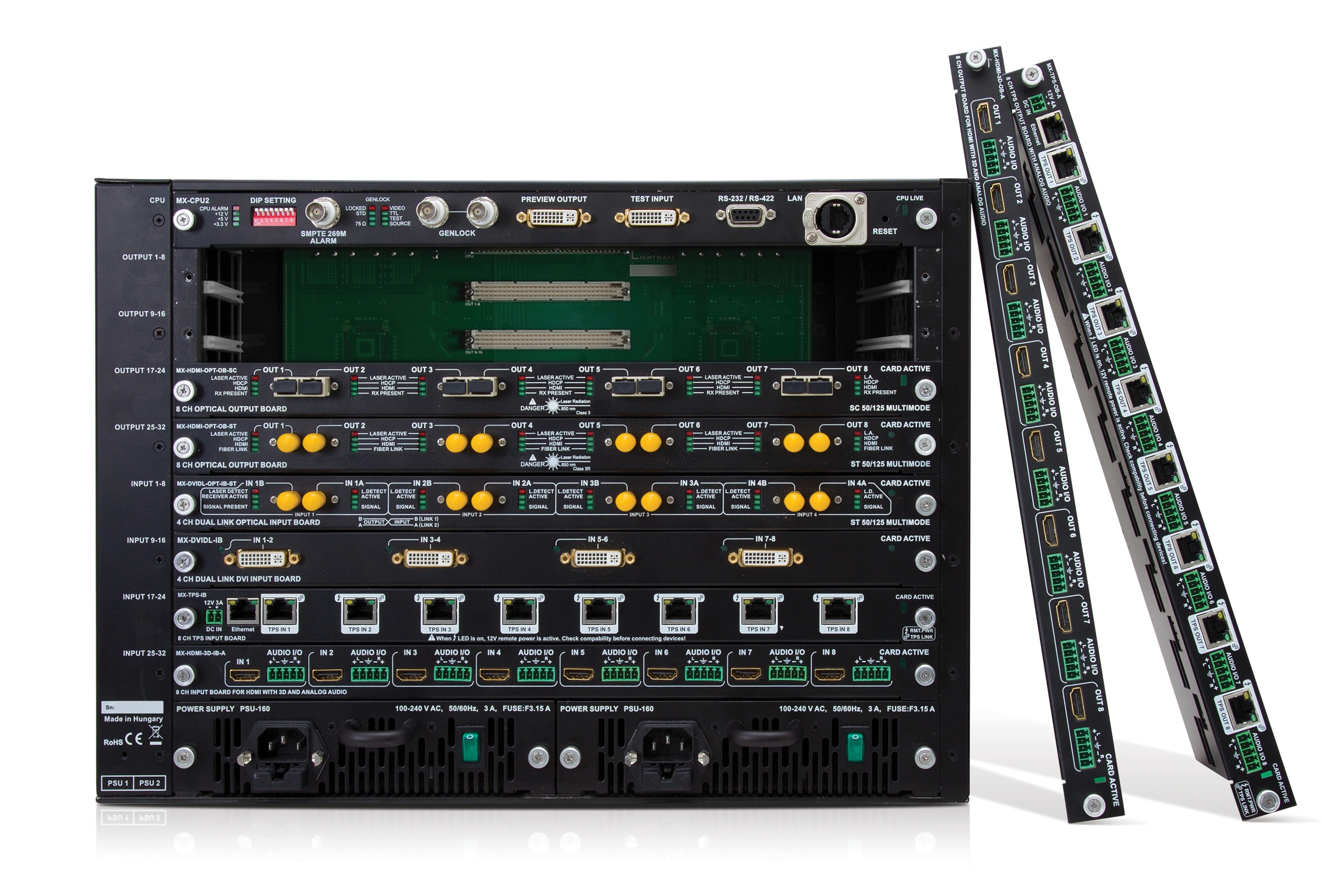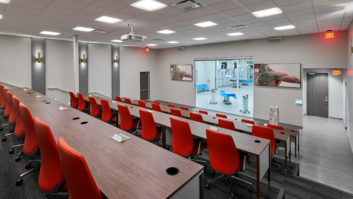
So much for today – but what about tomorrow? With 4K/Ultra HD just around the corner – how far around the corner depends on who you speak to – it’s inevitable that many end users are looking to ‘future-proof’ their installations. Can the switcher/scaler help?
Brian Davies, technology director at AMX Europe, notes the value of modularity in terms of providing some ability to respond to future developments.
“Modular-based switching solutions address the question of future-proofing by ensuring that the chassis/switching backplane can handle the bandwidth requirements of full 4K today, ready for the introduction of input and output cards with 4K scalers in the future,” he notes. “Should a customer need to upgrade to support full 4K, they will only need to change the individual card and not the entire switching solution.”
But beyond 4K?
“As with every product, the switcher/scaler will become obsolete as technology evolves,” believes Franck Facon, marketing and communications director at Analog Way.
“A quality product usually offers a three- to six-year lifecycle – it’s hard to predict technology evolutions beyond five years. Renewing a product periodically remains economically more appropriate than betting on the future. It is widely accepted that 8K will be the dominant resolution for 2020-25. However, no-one is ready to design such a product right now as it would be very expensive, without immediate applications, and not address other possible current and future issues.”
Difficult, not impossible
“Our market tends to move forward extremely quickly and this makes it difficult – but not impossible – to create products designed for real future-proofing,” echoes David Jones, international sales manager at Lightware,
“For example, many manufacturers have only just released products supporting around 12Gbps. Today, this is a pretty standard bandwidth to support – HDMI 1.4 and DisplayPort 1.1 require 10.2 and 10.8Gbps – but the biggest buzz in the industry today is 4K@60Hz. DisplayPort 1.2 and HDMI 2.0 are newly released formats that support these high resolutions, but they need 18/21.6Gbps to be switched. These newly released products will almost become obsolete just months after their release – and this is the problem professional manufacturers face. We are in a very lucky position whereby we’ve just released an architecture that’s capable of handling these high-bandwidth HDMI 2.0 and DP 1.2 signals.”
As Jones implies, scaler/switcher manufacturers are under considerable pressure. Greater resolutions, proliferating interconnect standards, higher bandwidths, soaring user expectations – all challenges they must (perhaps uniquely) respond to. For integrators, the challenge is no less tough in staying abreast of what’s out there as well as what the future holds so that they can offer optimum scaling/switching solutions.
“When designing any solution for an AV environment,” says Charran, “the design team must always take into consideration the applications it is being used for and the evolution of technology to ensure that scalability is taken into consideration.”
Suddenly, that collection of cables behind the TV seems less daunting.







